Lauraine’s blog
26 January 2022
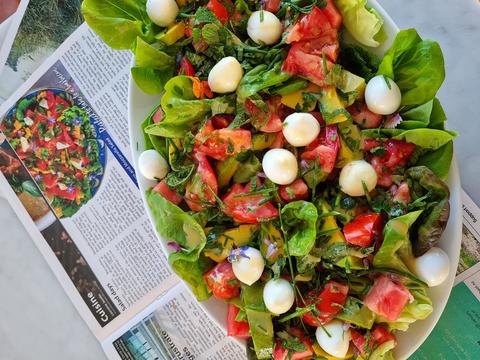
Sweetcorn. Tomatoes. Watermelons. Herbs. There’s always an abundance of wonderful fresh from the garden vegetables in the middle of summer that are perfect to serve at any meal and quickly get you out of a hot steamy kitchen.
Salads are the saviour of the season. Easy to whip at a moment’s notice they can be made ahead, and popped into the fridge for an hour or two to chill, making for an easy meal. It is essential to find very fresh veggies and leaves for a salad. Of course not all salads are based on green leaves but at this time of year the fresh crispness of lettuce leaves can’t be faulted.
I like to make any sort of leafy green as the base for my salads, preferring to lay the well washed and dried leaves out carefully to cover a wide platter, rather than have them disappear into a tangle in a deep bowl. Then whatever is fresh and appetising can be added, carefully placed so there’s an even spread of everything to be seen throughout the serving dish. I only ever really “toss” my salads when they are entirely composed of leaves. Spreading out the other delicious ingredients on top means that the best bits don’t disappear to the bottom of the bowl or all clump together so one lucky diner scores all the goodies.
A salad like this one is fairly basic but careful thought means you can substitute anything lovely you have in the fridge or in your garden or straight from the orchard. The sweetcorn gives the salad a little substance but you could use thinly sliced and steamed carrots, potatoes or radishes instead. Replace the mozzarella if you wish (it can be expensive and does not last in the fridge for more than three or four days after opening) with feta or a crumbly goat cheese. And rock melon, berries or any stone fruit can be substituted for the watermelon. Just remember to squeeze extra lemon over cut stone fruit so it doesn’t turn brown.
As for the salad dressing it is really important it is not too acidic. If you’re making your own dressing be absolutely certain to taste it before drizzling over the salad. A pinch of sugar never goes astray, especially when the salad is fruity.
WATERMELON, CORN, TOMATO AND MOZZARELLA SALAD
1 large cob freshly shucked corn *
1 iceberg, romaine or cos lettuce *
¼ watermelon *
6 small ripe tomatoes *
1 ball mozzarella or bocconcini *
A handful of freshly picked herbs and herb flowers
Dressing;
1 lemon, juice and zest *
1 tbsp balsamic vinegar *
1 tsp mustard *
3 tbsps olive oil *
A small pinch of sugar or ½ tsp honey *
Salt and pepper to taste
Shuck the corn and plunge into boiling salted water for 4 to 5 minutes. Allow to cool and gently cut the corn away from the cob. If you can manage to keep some in nice even pieces it will look really good on your salad.
Carefully pull the leaves of the lettuce apart and wash thoroughly in cold water. Shake dry in a tea towel so no water remains on the leaves. Lay the leaves as a base over a nice serving plate.
Cut the rind from the watermelon and cut the flesh into nice large wedges or fingers at least 5 of the tomatoes into quarters.
Drain the cheese and slice it into chunks.
Arrange the watermelon over the lettuce leaves, then arrange the corn and tomatoes on the greens. Strew the herbs over the top.
Make the dressing by shaking all the dressing ingredients together in a jar and then drizzle this over the salad.
Finally decorate with herb flowers. You can make the salad ahead, and cover tightly with plastic wrap and refrigerate it but it is better to add the dressing only half an hour before serving. You can scale up the quantities easily if you have a large crowd.
Serve 4-6 with barbecued chicken, fish, lamb or beef or by itself as a light meal.
First published in MAHURANGI MATTERS
23 December 2021
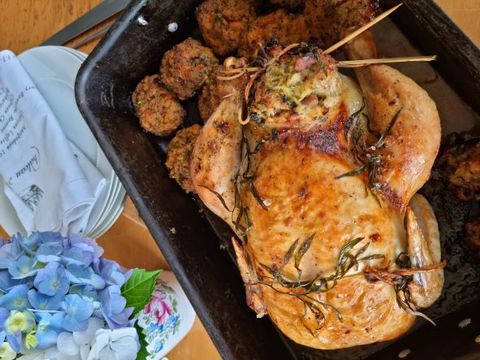
Here are TWO fabulous stuffings for your Christmas chicken and turkey that will enhance flavour and succulence of the bird!
Parsley, sage, rosemary and thyme with apricot stuffing
*2 onions, finely chopped
*2 tablespoons butter
*3 fresh apricots, chopped into 1cm cubes
*Zest and juice of 1 lemon
*1 cup fresh wholemeal breadcrumbs
*2 tbsp milk
*3 tbsps chopped parsley
*3 tbsps chopped rosemary
*3 tbsps chopped fresh sage
*3 tbsps chopped fresh thyme
*salt and freshly ground black pepper
*1 egg, well beaten
Place the onions in a frying pan with the butter and sauté over gentle heat until soft and staring to turn golden brown. Remove to a bowl and cool.
Moisten the breadcrumbs with the milk and add in with all the other ingredients to mix well. Allow the stuffing to get completely cold before using it to stuff the bird. Or make stuffing balls to surround the bird.
Oyster and Bacon Stuffing
*4 tablespoons butter
*1 fennel bulb, finely chopped
*4 rashers bacon, finely chopped
*2 thick slices sourdough, chopped into small cubes
*200g pottle of oysters, chopped (reserve the juices)
*4 tablespoons chopped fresh tarragon
*Zest and juice of 1 lemon
*salt and freshly ground black pepper
Melt the butter in a frying pan and add the fennel. Fry gently until it is turning golden, then add the bacon. Continue to fry until the bacon starts to get crisp. Remove from the heat, and add the chopped sourdough, oysters and juices, tarragon, lemon zest and juice, salt and pepper. Mix well and, when completely cold, stuff this mixture into the chicken.
TIPS
Feel free to make both stuffings if you are roasting turkey this Christmas. The oyster and bacon should go in the cavity at the breast end of the bird and the apricot and herb stuffing in the larger cavity between the legs.
For those who don’t like oysters, a couple of tasty sausages, skinned and mixed with the bacon and sourdough will make a great alternative.
And always, always remember if you are making the stuffing ahead of time, ensure it is quite cold when you stuff it into the bird. Keep the stuffing or raw chicken well refrigerated until it’s time to cook it.
21 December 2021
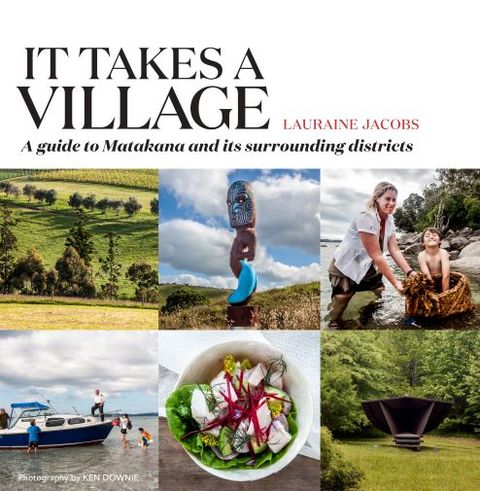
The perfect stocking filling gift. Email me now at lauraine@laurainejacobs.co.nz for a personally signed copy.
Collect from me at home- Auckland or Omaha Beach.
20 December 2021
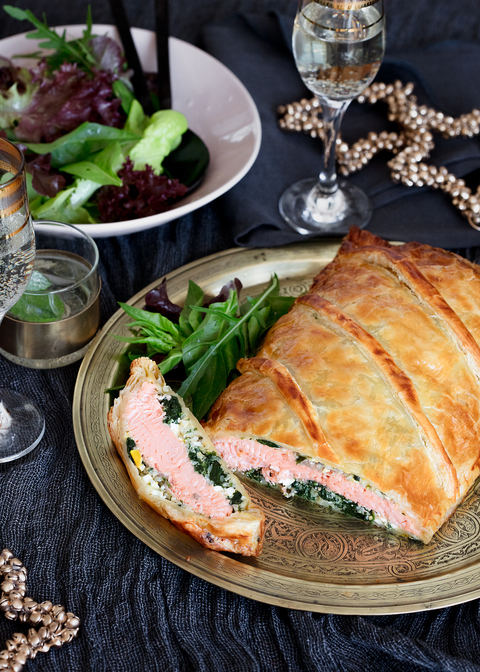
Salmon is always a welcome item on any celebratory menu like Christmas Day lunch. A couple of years ago I went to St Petersburg, only an hour’s flight from Stockholm where we had attended a wedding. The city is fascinating, the museums almost overbearing and the food was underwhelming, except in our hotel which had a caviar bar. Needless to say, I just had to indulge a little with a caviar and vodka cocktail platter. For dinner I was served salmon koulibiak, a tasty pie with fresh salmon, rice, egg and spinach. This is my version for Christmas.
- 1 kg piece of skinned and boned fresh salmon
salt and freshly ground black pepper
- 1 cup cooked long grain rice
- 500g spinach
- 3 eggs, hardboiled and shelled
- 1 cup finely chopped garden herbs (parsley, mint, basil, chives)
- 500g flaky puff pastry (Paneton pre-rolled)
- 1 lemon, juice only
- 1 extra egg for glazing
Skin the salmon and season with salt and pepper. If the piece is not an even oblong shape, cut it into 2 pieces down the middle lengthwise. Set aside.
Wash the spinach carefully to release any dirt, then cook in a small amount of salted water until it wilts. Refresh under cold water; drain and squeeze out thoroughly. This is important as if there is any residue water it will leak out into the pie. Chop very finely and place in a mixing bowl with the cooked rice.
Chop the egg into tiny pieces and add to the spinach and rice with the herbs, salt and pepper and mix well.
Roll out half the pastry into a rectangle about 6cm larger than the salmon, on all sides. Place this on a baking paper-lined baking pan. Spread half the spinach mixture along the centre of the pastry, so that it covers about two-thirds of the area, leaving a strip of about 6cm on all sides.
Place the salmon in the centre, topping and tailing the two pieces so that the shape of the salmon roughly equates to an oblong. Sprinkle over extra salt and pepper with a squeeze of lemon juice.
Carefully spread the remaining spinach and rice mixture over the salmon. Roll out the remaining pastry, and place this on top, sealing the top and bottom of the pastry base together, brushing the edges with the beaten egg, so it will remain closed and form a neat parcel. Use any trimmings to decorate the top. Completely brush the parcel with the remaining beaten egg. Return to the refrigerator for at least half an hour. Bake at 200˚C for about 20 minutes until the pastry is crisp and golden, and the salmon is cooked. Serve warm, cut into neat slices.
Serves 8-10
Wine match: chardonnay or champagne
24 October 2021

“You know you've reached peak stardom when you're granted a cooking show on Netflix.” I stole that line from internet comments posted on the trailer for Cooking With Paris but it’s true. I sat through the entire show – SIX (!) 20-minute episodes – and there’s no doubt in my mind that days are numbered for any relatively unknown wannabe television cook when the stunningly groomed and totally clueless but clever actress Paris Hilton can score her own show on this hottest of the streaming services
Warning - this is not about real cooking. But it’s worth the watch for the absolute spectacle of over-the-top kitchen fantasy, all complemented by pitch-perfect script writing. This show could only ever be made in Hollywood as it is pure theatre and glitz like we’ve never seen before.
The devil and the fun is in the details. The Clothes! The Bling! The Kitchen! The House! The Views of LA! The Fabulous Grocery Stores! The Party Planner! The Dining Room Decorations! The Immaculate Make-up! The Caviar! The Phones! (Paris has three) The Dippy Little Dogs! And best of all – The Cookbook! That book is worth watching the show for alone – with its cover of glitzy bling and stickers, it contains every recipe, all stolen from the internet and handwritten in coloured felt pens, so it absolutely resembles an eight year girl’s Perfect Dream Unicorn Project. I want one!
The shows go like this: Paris shops (“What’s a tomatillo,” she asks, struggling to pronounce it) then invites a friend over to cook a couple of almost ridiculous recipes - blue sticky marshmallows that go everywhere, couture cookies, a glossy turkey, etc to be served as part of a themed dinner eaten (or picked at) in a lavishly decorated dining room with the most outrageously extravagant embellishments. Her dishes are also suitably adorned with more bling and sparkly stuff like sparklers, diamantes, and more.
I recognised only one guest, Kim Kardashian, not surprisingly for me, as like most of the new elite of Hollywood Paris’ mates are all influencers or hip hop artists. Kardashian was a little more down to earth than the others as she has four kids and obviously cooks for them. She knew her way around the kitchen, unlike Paris who gives tips like “This is a whisk!” and “Garnish is my new word” and needs help to find the hood extractor on her own massive stove. I also loved the guest who came over and boasted about her new nose-job. The influencer who joined them for dinner that night said without any trace of emotion in his voice, “You have a new face,” as he offered to ‘cut’ the turkey.
Paris is deadpan funny, getting away with lines like “This sweetened condensed milk is the weirdest milk I have ever seen” and when reading a recipe that includes lemon zest she asks Siri, “What’s zest?”
But when her sister Nicky Hilton and mother, Kathy, came over to cook, the food truly picked up and I sat up. Pure extravagance and luxury. Caviar to start. (Caviar is almost a subtheme of this show – even those little dawgs get to eat it and at $380 an ounce it’s the real deal. Paris even snacked on it before her vegan guest turned up one night.) Filet mignon. Truffle butter. 23 karat gold leaf. Ranch dressing showered on the accompanying wedge salad, even if the wedges turned into chopped salad when not one of the family had a clue how to cut wedges. Crystals and pearls all over the place. And the most brilliant line of the entire show – Kathy Hilton looks at the food and says, “It would be good to learn how to make it all presentable.” Yeah, right!
Note: As an antidote to Paris there are two recent brilliant Netflix shows, each with four episodes. The best is High on the Hog – How African American Cuisine Transformed America inspired by the book by Jessica Harris. And Salt Fat Acid Heat featuring Samin Nosrat exploring these themes of her award winning book is not to be missed. Those shows helped me get through the sad weeks after my Mother had passed away. I highly recommend them.
First published in FoodWritersNZ Digest.
Image: Netflix
21 October 2021
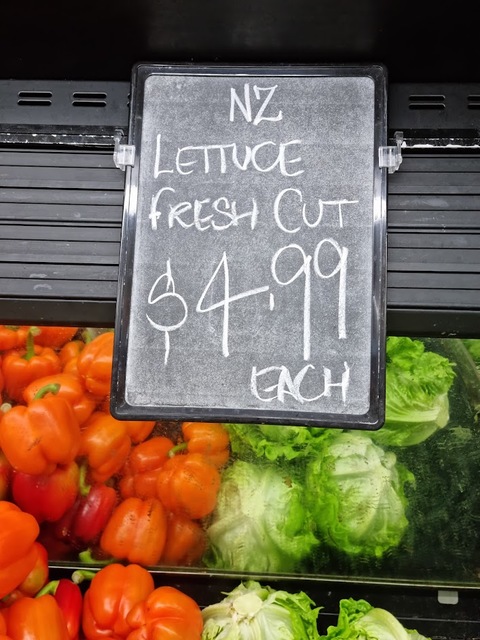
In the first week of our nationwide Covid Lockdown I ventured out to the supermarket and bought, amongst a small trolley load of food, a beautiful crisp fresh lettuce, grown in local soils. I gulped at the price, $4.99, but knew it would last us for three or four meals, and would stay crunchy in my fridge over the coming week.
But when I saw, on TV news that evening, a giant field of lettuces that were going to be ploughed in as their Pukekohe grower had no market for them, I was enraged.
That same evening another news story highlighted how food banks were running out as the demand to be fed under lockdown was unprecedented. To me those two news clips said everything about a food system that was unfair, unconnected and not working well for anybody who wasn’t a supermarket supplier or owner. Don’t even start me on the inequality of food distribution that leads to food insecurity. Grrrr.
Last year through Covid lockdowns and with cries from consumers who were turning the spotlight on food costs, our government ordered an investigation into supermarket pricing. Conclusions were drawn up, recommendations were sent to committees and to date not much has happened and very little has changed. Small guys still can’t find their way into the aisles and shelves, the duopoly stands fast and it seems ironic that having uncovered faults in the supermarket system we were once again consigned, in most cases by government decree, to limit our shopping again to these big players who draw up contracts with suppliers and keep smaller and often more specialised growers out. The supermarket owners’ pockets must be bulging with the windfall from the profits they’ve made. And many small guys continue to suffer.
Sure, we can shop online for food, if we know where to find the suppliers and how to manage electronic transfers of money, but I look at the plethora of small local and customer focussed bakeries, butchers and fruit and vegetable shops close to the surrounding community who have been forced to close for six weeks now. And I know many of the artisan producers and growers who tend and nurture their crops to cater to the whims of the hospitality sector who have lost their market share completely.
The rules, administered by MBIE haven’t improved or moved from the experiences of 2020. I wonder if anyone at MBIE has ever stopped to think about the ‘I’ in their name. To me they show little inkling of awareness of Innovation for anything, and complete lack of understanding of the meaning of the ‘B’ to small Business in both the food sector and the hospitality industry. However full marks for recognition of ‘E’ as supplements are paid out to keep the wolf from the door of Employees, and there are resurgence payments offered to the many who qualify. Of course we cannot expect our government to shoulder every loss, but both government and the people (us) they’re keeping safe must recognise that all pay outs will be ultimately be traced back or forward to taxpayers.
There are key questions that beg answers. Why should we be directed to shop in supermarkets where we’re exposed to everyone who does not keep their distance and is permitted to touch and handle produce? Why, when we could go to our preferred small local food shops who know and care for their customers in ways the supermarkets can’t even begin to think about? Why should conscientious growers and small artisan producers who regularly supply those boutique like businesses or are in the phase of growth where their only market is the local farmer’s market be forced to consign their produce to the compost heap? Could there be assistance to get such products to where they are really needed – the food banks? Could we have some innovation please?
The one question that keeps on recurring on social media is why do vegetables cost so much? Often the immediate answer to that is seasonality. Our duopoly of food marketers has done New Zealanders a great disservice by supplying everything year round, even if it means importing unseasonal fare, to the point where we all just expect to the food we love at the same old price every single day of the year.
I believe that it is mainly lack of insight into true costs which do not appear obvious when you hold that vegetable (or fruit) in your hands. It is rather like the poor hospitality people who constantly meet resistance when prices creep up. There are so many associated expenses that are unseen. Every cost has risen. Transport, rent, packaging, fuel, production, insurance, and labour which is in short supply and a very real problem with little relief in sight for both the food and the hospitality industries. Why should consumers expect in-store and restaurant prices not to rise? Why
should the growers give their hard earned products away? Currently there’s a real and much needed focus on sustainability. Never lose sight of the most important part of any business is to be sustainable it must be profitable. Not huge greedy profits that some people associate with business but enough profit keep in business, keep employees happy and hopefully pay enough tax to keep the world turning.
This post first appeared on The Feed NZ
17 September 2021
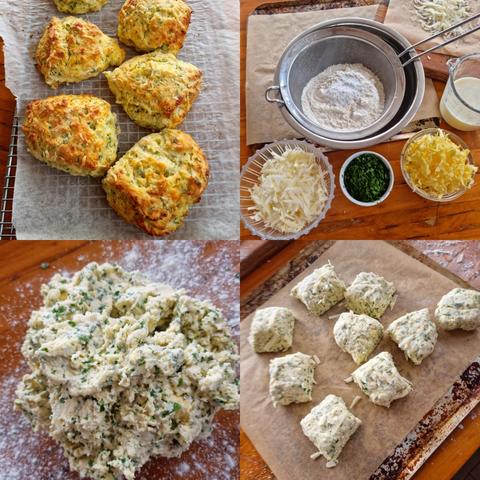
These scones need light hands! They’re sure to be a hit with all ages and can be whipped up from start to finish in under half an hour. I have given you the recipe first and then lots of tips and extra information to make a perfect batch every time.
Preheat the oven to 200°C.
Sift 2 generous cups flour into a bowl with 2 teaspoons baking powder and 1 teaspoon salt.
Grate 100g cold butter and rub this in with your finger-tips, moving your wrists up and down so the flour falls back into the bowl.
Grate 100g cheese and stir this in with a heap of freshly chopped parsley and sage from the garden.
Pour in 1 generous cup full cream milk or buttermilk and use a fork to bring the mixture together.
Dust the bench lightly with more flour, tip out the sticky mixture and pat it out to a thickness of 5cm.
Cut the dough into 8 to 9 pieces, top with a little extra grated cheese and place on baking paper on a flat oven tray.
Bake for 12 to 15 minutes until golden and crisp.
Best eaten with lashings more butter while still warm.
NOTES and TIPS
• Salted butter is best and ‘rubbing’ it in means taking the flour and butter in your finger tips and very gently squeezing it so the butter absorbs into the flour. By lifting your hands out of the bowl you aerate the flour for lighter scones.
• Use your favourite cheese but try to find cheese that’s full of flavour. I like Gran Padano and never in a month of Sundays would use that pre-grated packaged cheese. Leave that for the kids to make playdough!
• Fresh herbs are always best and right now spring sage is just wonderful. If you are tempted to use dried herbs this is the only place in the recipe where you should be frugal.
• My favourite milk (Durham Farms organic Jersey milk) comes in big bottles and is often near or has passed the Use by Date but that is absolutely perfect for scones as it adds a savoury tang.
• When adding milk use your judgement. You really want a pretty wet sticky mixture so if it’s looking a bit dry and not coming together easily, add extra milk around the edges of the dough and draw that in.
• Don’t be afraid to add a little paprika or some chilli flakes for extra bite but the kids won’t be pleased.
• And if you’re like my husband you can slather jam on the warm scones as cheese and jam are a great combo.
• Enjoy!
9 September 2021
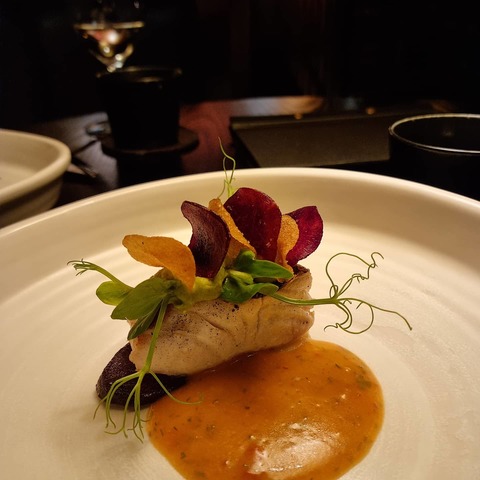
My photo above, shot in pretty dull inside light on Friday 13 August shows a dish, Ika and Kūmarā, which I consider to be as perfect a dish as I have ever eaten in my long life. It’s almost a month since I ate at Hiakai. Wretched Covid has caught up with us all, we’re in Lockdown again with no takeouts, no cafés or restaurants, and as someone and everyone says to me, I should consider myself lucky to be alive! (Probably the best of my luck is I can cook and know how to order good food on line.)
But it sure is more than just luck is that in the weekend I did go to Wellington before this mess descended upon us, I got to dine at Monique Fiso’s amazing Hiakai. It was the third occasion I’ve eaten there and I am absolutely astonished and delighted just how perfect the Hiakai experience has become.
This talented chef, who has fast developed an international reputation due to her appearances on Netflix and Gordon Ramsay’s worldwide series, has refined her focus and pays homage in the most delicate way to the indigenous ingredients of our country, Aotearoa New Zealand. Her food is sophisticated yet approachable and presented with precision. The waitstaff convey the story behind every dish, every ingredient and deliver it with confidence, perfect Te Reo Māori and show due respect for both food and the diners. The kitchen is calm, the pace spot-on and above all every single bite is delicious.
Each menu that Hiakai presents shows not only the evolution of Fiso’s cooking and ideas, but it also contributes to the developing story of our food in ways that other chefs only dream about. The current menu concentrates and centres on indigenous ingredients, with each of five courses centred on one of those. The first course, a platter of ‘snacks’ showcased one of these ingredients (harakeke, horopito, manono bark etc) which made a reappearance in the subsequent courses. Each course an adventure, without flaw and spot-on.
On the menu that evening, Te Whanau Kinaki –the starters, Harakeke - a course of stunning vegetables, Tītī, Cabbage dressed as Mutton) - sublime cabbage and mutton bird, the afore mentioned Ika and Kūmarā – fish and chips with a fermented tomato sauce, Horopito – stunning rare beef with exquisite kale and sauces, and two desserts, Apple and sorbet and Forest Floor – chocolate, with manono sorbet and ‘mushroom’ meringue.
Perfection! And all matched to either truly interesting wines or innovative non- alcoholic drinks. Bookings may be harder to find than MIQ spots but it is absolutely worth it. I am going to say it here. Currently Hiakai is NZ’s absolutely best restaurant! Nga mihi Monique.
28 August 2021
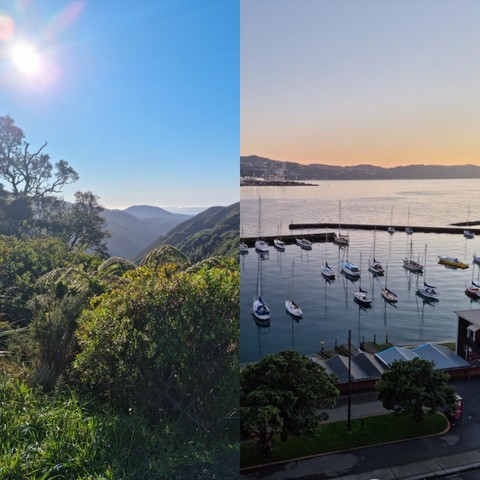
This morning began with a delicious taste of Wellington - the outstanding Fix & Fog Everything Butter on my sourdough toast - and it dawned on me that it’s only a mere fourteen days since I spent a brilliant weekend there. It seems a lifetime ago, now we’ve endured Lockdown for 11 days. I was in Wellington for the NZ Food Writers’ conference which also involved a day-long food discovery trip over the Remutakas to Featherston and Martinborough.
The food scene in the capital city and surrounding region was positively buzzing. It was the Big Weekend of Welly’s month long food festival, Welly On A Plate, including the extraordinary Beervana. I went to this riotous event and had a startlingly good beer cocktail, made by Bone Face from Upper Hutt and managed unsurprisingly to get my shoes pretty sticky! I also ate at the wondrous Hiakai (more in my next blog) and had dinner at Bellamys in The Beehive which most folk don’t understand is run by Logan Brown and public can dine there by reservation. Great food. It’s a tragic shame Covid has curbed the boundless enthusiasm and postponed the action of the exciting and well planned WOAP this year, again.
The conference was informative, packed with interest and great food as can be expected when some of the nation’s best cooks and foodies assemble, and lots of fun. Breakfast by Le Cordon Bleu cookery students was healthy and tasty, a hearty hāngi lunch cooked by master Māori forager Joe McLeod was a revelation to the intricacies and uses of native flora, and the delicious late morning cocktails we poured ourselves under the guidance of the Aperol Ambassador really hit the spot.
A jaunt next day began, after crossing the Remutakas in brilliant clear weather with a visit to C’est Cheese in Featherston (well recommended), and then on to a little market place set up in the Brackenridge Country Estate to showcase some of the amazing food artisans of the ‘Rapa who shared their olive oils, chocolates, honey, mushrooms, cheese? (who knew the 'Rapa had three cheesemakers, sheep, goat and milk respectively and all top notch?) coffee, stunning bread and the award winning Tora Collective who catch and sell seafood including fresh paua.
A chance to reacquaint us with Martinborough’s village led to the discovery of Deborah Coddington’s excellent and carefully curated bookshop in a back lane and was followed by Adam Newell’s delicious locally sourced lunch in the Martinborough Hotel, with fine local wine. And finally a stop at Te Kairanga Estate to have a preview of what is going to be a very fine visitor centre complete with restaurant and cellar door for their portfolio of TK and Martinborough wines and Lighthouse gin. That impressive structure will, I predict, change the face of the local visitor and tourist experience when it opens in 2022.
But amongst all that food, wine and beer, it was the ideas expressed in the morning session of the conference that have left my head buzzing. Sarah Meikle, Festival Director opened the day’s proceedings, followed by an erudite panel, expertly chaired by our VP Tash McGill, who faced up to “The Future of Food.” You had to be there to inhale and breathe the multitude of ideas and challenges thrown out by the panel. For me it was exciting because two of my absolute top food heroes in the country, Sarah Meikle and Rachel Taulelei (CEO of Wakatū’s Kono Food and Beverage Corporation) left me with so much to think about. Both of these fine Wellington wahine truly contribute at the very highest level to the fabric and direction of Aotearoa New Zealand’s culinary and cultural scene.
Every ‘Future of Food’ panellist contributed smart and sassy ideas. Climate change looms big in everyone’s minds, as to be expected in a country that has put its faith in growing food. Food safety and security, often side-lined in the past, are paramount as we face stepping up with innovation, diversification, regeneration of our precious soil and water and ensuring that everyone without exception does not go hungry. Change needs to come in the hospitality sector and my hero Rachel added that the Tiriti has us examining ownership of land and water. She emphasised that this constitutional partnership must empower both parties, Māori and everyone else, to meaningfully participate in the economy. Every community must begin like some of the examples shown around the country are doing where the community grows food first and foremost to feed their own before becoming commercial. (Wakatu in Nelson, Ngati Whatua at Te Pourewa gardens, and projects like Maunu Gardens in the Far North.) And wisely Rachel pointed out that we must all recognise everyone who produces food, from large corporations and businesses through to small artisan producers and food gatherers.
Sarah Meikle is the outstanding leader of championing and assisting the regions of our country to tell their food stories, and she delved into the possibilities of using the unique position we’re in to elevate the often forgotten quality of our food and the stories of those who produce it. Quoting NZTE’s recent survey across six major international markets she identified the key purchase drivers – Tasty, Affordable, Trusted Brand, Safe Products, Healthy, Fresh, Ethical and On Trend. She pointed out that our most significant storytelling challenge is how we build national pride for what we have, what we produce and by whom, and urged us all to discard ideas of which region reigns. Her final words, “Let’s all love everything about every part of Aotearoa’s food story.”
26 August 2021
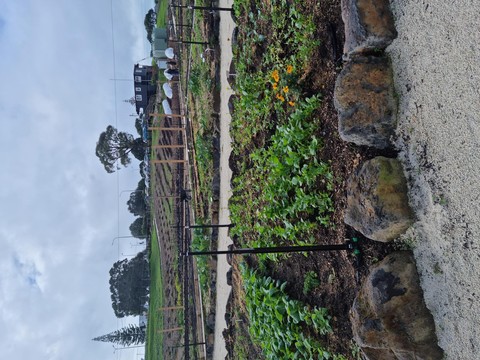
For my last column in the now lost and lamented local publication The Hobson, I visited Māra Kai (food gardens) in the Ōrakei Te Pourewa gardens in Kepa Rd, the initiative of the local Ngati Whatua Trust of the local Ōrākei marae.
I wanted to learn that more about the plantings of their first food crop of kumara as Matariki was imminent. This root crop is much loved by Māori and one of the tāonga or treasures of traditional cuisine. Widely accepted that kumara was introduced to New Zealand in the fourteenth century from Polynesia, it has been cultivated in the northern climate ever since and local iwi Ngāti Whātua, who run these gardens, harvested 3 tonnes of delicious kumara in their first growing season. In addition over 3000 kg of other vegetables crops were harvested there and distributed last season.
The gardens are really worth a peek as they provide an opportunity to feed the needy and hungry with a range of traditional native and colonial vegetables planted according to the knowledge and science gleaned from the stories and experience of the whenua and those who first cultivated land on the Auckland isthmus. Native puha, kamaho and watercress, much loved in traditional diets will be grown in 2021 along with five varieties of kumara and a sophisticated electronic-controlled composting system will produce copious quantities to nurture the two edible native mushrooms, tawaka and harore.
Observant onlookers and passers-by will have noted the development of the gardens, with their native tree nursery and garden in full production on the land formerly known as the pony club paddocks.
Roger Small, the curator and designer of the mara kai gardens was formerly a director of Regional Parks in the Auckland area, responsible for the Auckland Botanic Gardens in Manurewa and explained that the layout, a grand circle represents energy with paths crisscrossing from east to west and north to south within the garden. The science behind the plantings has been gleaned and learned from the experience and stories handed down from the kaumatua of the area. As he said, the people of the Tamaki isthmus “Once Were Gardeners” and the local members of the Ngati Whatua carry on these traditions.
Local specially grown traditional crops will include five varieties of kumara this year, prized kamokamo and puha, and an impressive watercress pond with fresh running water.
An electronic compost machine will provide two large recycled containers with enough dark matter to raise harvests of the two edible native mushrooms. Alongside these native plantings there will be plenty of traditional colonial vegetables and herbs.
The vision, which includes a Wellness garden with a centre of excellence to learn about traditional healing, and a Weaving garden to provide fifty species of plants and shrubs for harakeke and dyes, is for Te Pourewa to welcome people and show Ōrakei to the world through produce, expertise and innovation.
Recipe for KUMARA GRATIN & PORK BELLY IN THE RECIPE SECTION OF THIS SITE









